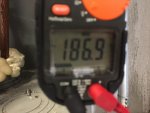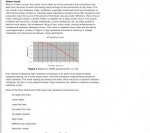heres maybe a better view at the powersight charts,
its not a real proper power quality meter, just a data logger - and kind of old too....
https://1drv.ms/f/s!AkuU8mYuf3eEf0nElde4MKltTXw
its just because of the slow sampling rate , the quickest is every 1 second!
i really have to go back and get better Elevator min max reading with a finer grain of detail
individual reading on the parallel conductors
you can see the amps vary from 314 / 342 /333
while the volts show 185/ 190 / 197
but that is due to the sampling interval of 1sec...
I should be able to prove its on their side of the line-
prove that my load is balanced
- by showing good balanced or bad rickety instantaneous amp draw and voltage sag with a 100kW load bank at the mains [i'll use both the data logger and some clamp meters]
but its $500-$1000 to rent it for a day
- by showing bad inferred voltage at the mains with small [30a] load and precise volt measure
That's just not as convincing]
what will the 3 lightbulb test actually prove?
helps narrow it down to one leg
If all legs dip down -that much... in the same moment - then it must be their problem because there is no imbalance
I know the voltage sags and the lights dim when the elevator rises
The only convincing way is to
not use the elevator and pull a big balanced load on the line conductors -
I have just been avoiding the obvious expense of renting the load bank because it seems so obvious to me that it must be their problem because its on their side of the meter and my load cant be that out of whack
-









